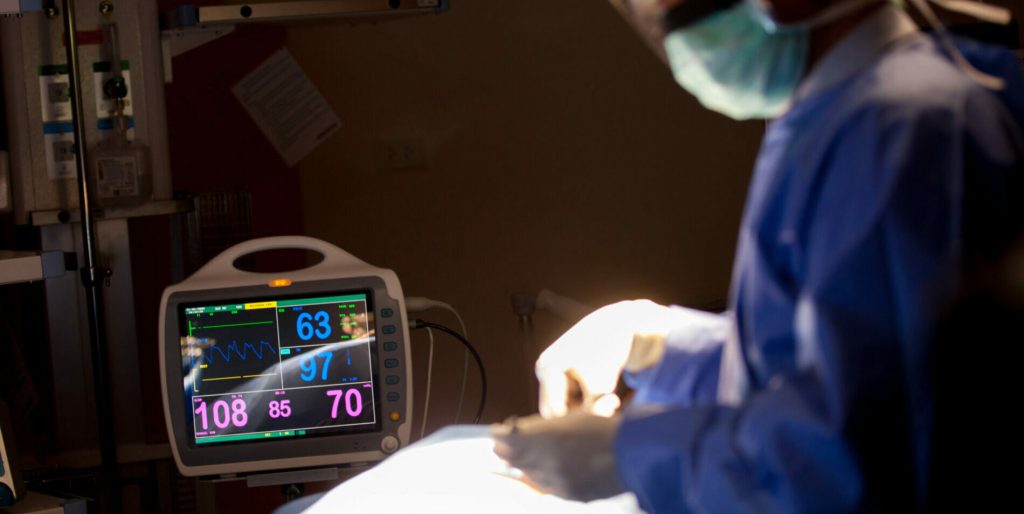
By Kelly Asche
To watch a webinar presenting this research and a Q&A with healthcare experts, click here.
Before the COVID-19 crisis began, the Center for Rural Policy and Development was gathering information and analyzing the impacts mergers and acquisitions among health care providers have been having on access in rural areas. We were a few weeks away from releasing a report before the pandemic threw everyone’s lives upside down. While we adapt the report to this new reality, we will be releasing parts of that research while also bringing into focus how the COVID-19 response is magnifying the issues we identified in the original research report. It’s likely that access health care services and the health of our health care providers will be a significant conversation over the next year.
Part 1: Declining revenue for rural hospitals
Part 2: Health care mergers and acquisitions are the new reality
In part one of this series focused on the future of health care post-COVID-19, we highlighted the dire financial situation our rural health care providers are facing even before the pandemic. Driven by a change in payment philosophy in the health care market as well as the significant downturn in revenues due to the COVID-19 epidemic, it’s likely that smaller, rural health care providers will see further consolidations of their service offerings or even closures.
Much of the angst surrounding the consolidation of services and closings of hospitals and clinics around the state stems from the idea of “access.” Any consolidation or closure will result in rural patients having to travel further. For example, in Albert Lea the obstetrics services were consolidated to Austin, while cancer treatment services were consolidated to Albert Lea. For folks in Albert Lea or Austin, this means a 20-minute drive, but for patients in the surrounding region who looked to one facility or the other as their closest service provider, 30 to 45 minutes or more may become the new normal.
A significant amount of research has been dedicated to rural healthcare access. Most of it looks at the topic from a nationwide perspective, but results from this research consistently show that hospital closures occur at a significantly higher rate in rural areas than in metro areas. In addition, the distances rural patients travel for services are significantly higher than for metro patients. Some of the most significant access issues are found in the southeastern United States, while Minnesota is typically seen as the poster child for health care service delivery.
However, that doesn’t mean there aren’t disparities. The Minnesota Department of Health’s Health Economics Program regularly conducts a healthcare access survey. Their most recent survey results draw a disturbing picture for rural residents:[1]
- 16.5% of Minnesota’s population lives in small towns in the state’s most rural areas, yet 9% of the healthcare providers are located in these same areas.
- Between 2009 and 2018, rural hospitals saw an 11% decrease in inpatient surgery services, 7% in outpatient surgery services, 30% in detoxification services,[2] 7% in CT scanning services, and 8.5% in MRI services.
- Nine rural counties lost hospital birth services, driving up the total to 29 counties.
- Rural Minnesotans were more likely to be told that a provider was no longer accepting new patients (5.9% of respondents compared to 4.4% of Twin Cities metro respondents), or weren’t able to get an appointment as soon as they needed with a primary care provider (64.6% of respondents compared to 48.3% of metro respondents).
There are significant differences in access based on travel times, too. People living in rural areas expect to drive farther for healthcare services, but there is no hard-and-fast definition of how much is too much, nor how much travel times differ for patients in rural areas compared to metro-based patients.
But again, the Minnesota Department of Health’s Health Economics Program provides a glimpse. According to their 2017 Rural Health Access survey, “rural patients seeking inpatient mental health and chemical dependency treatment travel three times longer than urban patients (77 minutes compared to 24 minutes).” Their survey also shows that rural patients travel farther for obstetrics, although the difference isn’t as significant as with mental health, where there is a particular shortage of services in rural areas.
Figure 3 provides the average distance traveled by patients for three specific inpatient services. For all three, residents in the most rural counties traveled three to four times farther than urban patients did. For example, cardiology patients in the entirely rural group traveled 77 miles, compared to only 21 miles for patients in the entirely urban group.
More concerning, though, is the trend: patients from entirely rural and town/rural-mix counties were traveling about 33% farther for cardiology and neurology services in 2019 compared to 2010.
Figure 3: The number of miles traveled for these inpatient services increases significantly as the location becomes more rural. In fact, on average patients in the most rural counties travel three to four times farther than urban patients. Learn more about RUCA county groups here. Data: MN Hospital Association
Figure 4 provides the average miles traveled by patients from each RUCA group for a few select outpatient services. Again, patients from the most rural parts of the state have to travel farther than their urban counterparts. However, this difference isn’t as significant as the inpatient services.
Figure 4: The number of miles traveled for these outpatient services increases as patients come from more rural areas of the state, but not as significantly as the inpatient service examples. Learn more about RUCA county groups here. Data: MN Hospital Association
It’s not surprising that folks in rural areas of the state must travel farther for health care services, especially when those services are highly specialized, such as neurology. However, given the major shifts occurring in the health care market and the current revenue sacrifices being made due to the COVID-19 pandemic, consolidations of services are going to continue, and more hospitals will be making some tough choices about what services to offer and where. And these impacts are and will continue to be felt almost entirely in rural Minnesota.
[1] MN Department of Health | Division of Health Policy, presentation, “Rural Health Care in Minnesota: Data Highlights,” November 21, 2019.
[2] This is a particular problem for law enforcement because counties are closing their detox centers, too. Cops have no place to take people who just need to dry out overnight except jail, and for those who drank far too much or were on drugs, if they have a health emergency, they’ll end up in the emergency room anyway or will just be out of luck.



